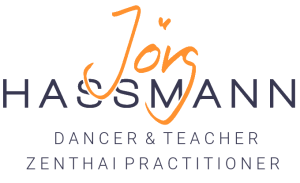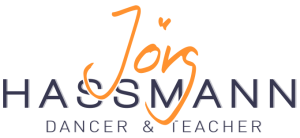The risky stuff – Improving CI technique, but how?
“If you want to reach the maximum of your technical abilities you need to work on jamming and improvisational skills.”
A recent workshop with our experienced Half Year Programme group in Berlin led me to this statement, which is refreshingly provocative for me.
Some participants articulated the wish for more hard skills, more risky stuff. We understood it as the desire to expand ones technical abilities by practicing clear material, that people could repeatedly practice. We played with falling into little rides, handstand based material, transporting lifts and jumping on someones shoulder. It was sweet to have this adrenalised excitement in the space, people trying things out, giving each other feedback, failing, failing and succeeding. ‘How does it actually work? Let’s figure this out!’ was the spirit in the space.
I see the wish, to go beyond what one can easily do. I see the desire to be challenged, to take risks and to expand the options in the dance. I am just talking about the technical limits, the fancy stuff, not so much the inner felt quality of a dance.
It seems to be a rather common experience that we can do exciting stuff in technical exercises but when it comes to jamming they don’t appear. People stay below their limits.
Somehow I have the feeling it should be the opposite. The limit of what we are capable of, we should find in open dance frames, not in technical exercises. What pops up in open dancing should go far beyond the best we can do in technical exercises.
In a dance frame we have the chance to have all our knowledge present, we can get into a state, where everything that we can physically do is available to us, so that we are capable of things we never thought we could do.
In exercise frames we brake difficult movements down into smaller bits and basic principles. Working on a movement principle can guide us into more efficient, healthy, more powerful or fluid ways to move. It has the chance to re-pattern our movement habits and through that to open new possibilities that give us more options in an open dance frame. With the chance to repeat movements we can tune into the logic of it, also into the communication with a partner and our timing together.
In that sense I can understand, why some people feel the maximum of their potential in well designed technique classes or laboratory spaces. But I dare to say: If this is how you experience it, then you need to work on your jamming and improvisational skills.
The core question is how do I get into a state, where I am fully available to what I am physically capable of and responsive to what’s happening around me?
If I am interested in risky stuff I need to learn how to foster the desire for risk taking. It is not a desire that happens in my mind while I am talking about Contact Improvisation and imagining how I’d like to be able to dance. It is the desire that needs to tingle under the skin or in the heart when I am in a more open CI setting.
It needs a lot of practice to sense where the risk begins. Smelling the little risks is essential. It is about an attitude. And it happens probably first on an emotional level. Do I dare to stay without touch a bit longer? Do I dare to get into a connection with someone without really knowing how? Do I dare to insist to stay with a theme a bit longer? Do I dare to follow also awkward impulses that might not please my partner but create some challenges? Do I dare to have plans and let go off them if they inhibit a meeting? Where do doors open for new or less familiar options?
All this is very personal and individual and also depending on the day, the frame, the actual moment.
What does help me to get into my body, to feel a physical and mental readiness? How do I negotiate my journey within open dance frames? What are my strategies to balance my need for inner comfort & trust with my desire to taste the edge of my comfort zone?
In terms of technical work I believe that practicing basic stuff is the core. Basic stuff is basic if it enables us to understand the fundamental principles that underly the complex and risky moves.
Technical work should lead us in gentle ways to the edge of our comfort zone to be in dialogue with the emerging fears in order to expand trust. And that is usually slow and subtle work.
This would be a nice and comforting end of this text for me. Giving the responsibilty for learning ‘the risky stuff’ back to my students. But I honestly wonder, what is my part in this as a teacher?
I also believe in presenting more complex and risky material. Seeing those options and getting a little physical taste of what might be possible is essential for our nervous system to allow new neurological pathways do develop. But I believe that – at least for most of us – mastering complex-risky movements by steady repetition is not the quickest and for sure not the only way to learn the fancy stuff. Especially around the complex risky material, we are confronted with the question, how to get everything warmed up, that is physically needed for a certain move. How can I be alert and ready for adrenalized situations while still trying to understand what I am doing and what I should do differently to master a certain move? It becomes a question about how to create the right tone and energy for these kind of learning situations.
That questions leads to an ingredient that teaching can offer to approach the risky stuff: Offering exercises that bring people into situations, where quick responses are encouraged, like ‘passing through’-material from David Zambrano, or exercises from the martial arts-fighting world, play-fight or fighting monkey.
Since my work is based on rather subtile and calm somatic approaches, where people can follow their individual timing I am not so used to giving more ‘pushy’ offers. I wonder if I want to invest more into that direction or if should leave that to other, maybe younger teachers?
I have to admit: I know the benefits of regularly repeating more complex movements. I practiced capoeira for four years, where the learning is mainly based on repetition. Doing the same things over and over again in order to find the freedom to use what’s appropriate in every single moment of the improvised game. I have these wishes popping up to train for CI in a similar way, but the wish usually cools down pretty quickly. Why?
One main difference in CI is, that there is no such thing as a regular practice with a constant group, that has a common focus – regularly in terms of 2-4 times a week. Another thing in CI is, that it is too multilayered and people’s interests and needs are too different. Not every class wants to build up towards physical risk taking. And I feel in CI it takes more preparation time and effort to enter risky material than in martial arts classes. For weight sharing situations, we need to tune in with the partner pretty intensely to get the communication to a level where we can start working. In martial arts based practices there is non constant weight sharing and negotiating. Often there are ‘no touch’ or ‘in and out of touch’ excercises, with more buffer to compensate missing precision. So it takes less time to start working with a partner. And it leaves more time for repetition.
And even though CI is – at it’s technical core – a partner dance form, it only makes sense to me if we take the complexity into our practice that we are sharing the dance as a group with multiple ways to connect to other people and the space.
What kind of frame could offer more repetitive work on risky stuff?
A workshop, as the main frame I use, doesn’t really do it. It needs more regular practice. It would need enough people, with a shared interest, who live close enough together, who’s weekly schedules are compatible enough to meet something like twice a week over a certain period of time (Or one research meeting per week plus one Jam together.) With access to a space. Another part of that kind of work would be to design individual practices outside the CI-world to develop certain essential skills like falling, muscular strength, handstand stuff … I’d love to see that happen. But that is very hard to create, I guess.
How about a three hour format that always starts with a jam (with an intro or focus). But the last 60 minutes are for doing technical exercises, practicing basic forms, that are repeated every time and which can be developed towards more risky stuff. For Berlin I’d imagine a two or three weeks period with 6 sessions with a rather constant group.
In case I manage to realize it I’ll promise to write about the outcome. I’d be also happy to hear about formats other people tried out!
If all that is not available we still have the option I described above: Using the frames we have, like Jams, Workshops, Festivals and learning how to get myself into a smart risk taking but still responsive state in the phases of more open explorations.

